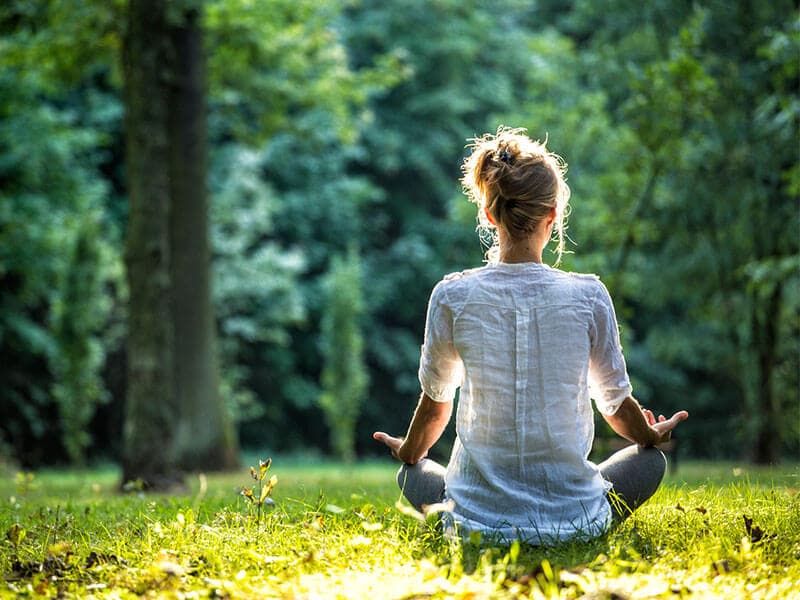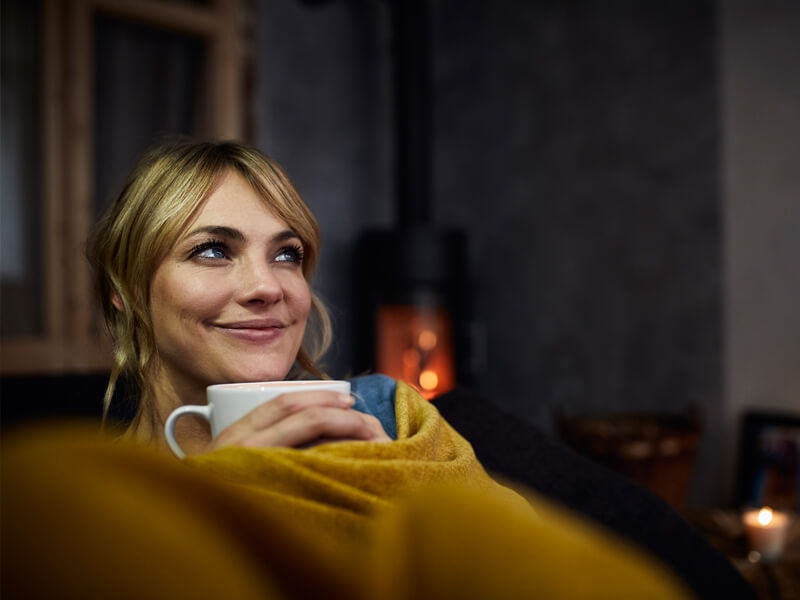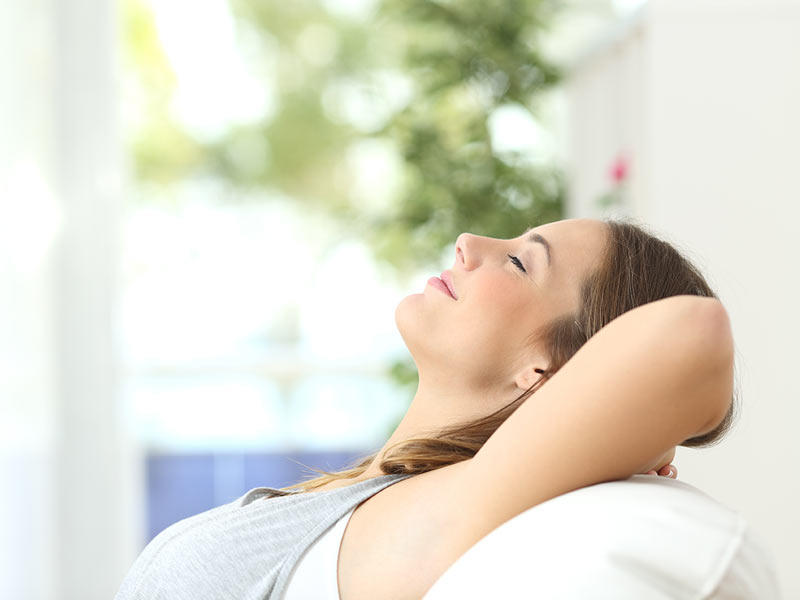
For many of us, relaxation is a rest at the end of a busy day. And it is the same for most of us – at the TV screen or home computer monitor. But this is not the best way to relieve emotional tension, rather, a kind of illusion of relaxation.
The senses remain in working condition – you experience emotions and anxiety. From the physiological point of view, this method is not suitable for stress control, because for a full recovery of mental strength, you need to activate the natural reaction of relaxation of the body.
There are special methods for this (yoga, qigong, tai chi, zen), but even without their knowledge it is possible to learn to cope with anxiety and depression, to control anger, to avoid many diseases of the cardiovascular and nervous systems, and to spend some free time practicing them every day.
The exercise packages below are built around accessibility and feasibility, and include elements of yoga, meditation practices, and breathing exercises. Remember that they can be improved by using relaxation techniques along with physical exercise to ensure proper rest through healthy sleep.
When starting to practice different relaxation techniques, remember the following. Learning the basics of relaxation techniques is not difficult, but takes time and effort.
Most experts recommend at least 10-20 minutes per day. Those who attend special relaxation sessions take 30-60 minutes. Start small, and the individual elements of the exercise can be done right at the desk, in the transport, at the stop.

Breathing exercises
Deep breathing allows you to relax regardless of the thoughts that overpower a person. It is not in vain that the police or doctors who arrived at the scene of the action advise the victims to breathe deeply and evenly in the first place.
In stressful situations, breathing becomes more frequent and the body lacks oxygen. Deep breathing promotes the entry of this vital gas into the brain and all cells in the right amounts.
Exercises:
- Inhale and exhale slowly and deeply through the nose, counting from 1 to 4 when inhaling and exhaling. This exercise is very easy to do and especially effective if you can’t sleep.
- Try to relax shoulders and upper chest muscles when breathing. Do it consciously with every exhalation. The fact is that in stressful situations, when a person is tense, the muscles of the diaphragm are not used for breathing. Their purpose is to lower the lungs down, thereby expanding the respiratory tract. When we are excited, upper chest and shoulder muscles are more often used, which do not contribute to the full functioning of the respiratory system.
- Nadia Schodhana. Yoga exercise, which helps to activate and concentrate, acts like a cup of coffee, according to specialists. Thumb of the right hand you need to close the right nostril and breathe deeply through the left nostril (in women, on the contrary – with the left hand to close the left nostril and breathe through the right one). At the peak of breath it is necessary to close the left (right for women) nostril with a nameless finger and exhale.
- Sit down straight or lie on your back. Put one hand on the stomach, the other on the chest. Breathe in air deep through the nose, the hand on the stomach should rise and move only slightly on the chest. Breathe out through your mouth, the arm on your stomach drops again, and your chest hardly moves. In this case, breathing will be done with the help of the diaphragm.
Muscle relaxation
The technique of progressive muscle relaxation was developed by the American doctor E. Jacobson in the 1920s. It is based on a simple physiological fact: after the tension of any muscle, the period of its automatic relaxation begins.

With this in mind, the method was developed according to which to achieve deep relaxation of the body, you first need to tense the muscles for 10-15 seconds, and then for 15-20 seconds to focus on the resulting feeling of relaxation in them.
Exercises:
- Start by focusing on your breathing for a few minutes. Breathe slowly and calmly, think of something pleasant. After that, you can start muscular exercises by working on different muscle groups.
- Hands. Squeeze your hand as tightly and firmly as possible. You should feel the tension in your hand and forearm. Relax your hand on an exhalation, concentrating on the resulting feeling of relief. Repeat the same for the other hand. If you are right-handed, start with your right hand, if you are left-handed, start with your left hand.
- Neck: Tilt your head back, slowly turn it from side to side, then relax. Pull the shoulder joints high to the ears and tilt the chin to the chest in this position.
- Face. Raise your eyebrows as high as possible and open your mouth wide (as if you were in a state of great surprise). Close your eyes tightly, frown and rub your nose. Hardly squeeze your jaws and take the corners of your mouth back.
- Breasts. Take a deep breath and hold your breath for a few seconds, then relax and return to normal breathing.
- Back and stomach. Tension the abdominal muscles, reduce the shoulder blades and bend the back.
- Legs. Tension the front and back thigh muscles while keeping the knee in a tense, semi-bent position. Pull your foot as far as possible and fold your fingers apart. Pull out the ankle joint and squeeze your toes.
Do 3-4 repetitions of the complex. Each time you give rest to just tense muscles, pay attention to how pleasant it is and how well you feel relaxed. This helps many people cope with stress and anxiety.
Meditation
The most general definition of “meditation” in psychological dictionaries is as follows: “the reception of mental training, in which there is an intensive, penetrating into the depth of thinking, immersion in the subject, the idea, which is achieved by focusing on one object.
The recommendations collected in this block relate to how to conduct a visual meditation session on your own. Visual meditation is a variation of traditional meditation, which is based on the use of not only visual meanings, but also feelings: taste, touch, smell and sound.
When used as a relaxation technique, visualization includes an imaginary scene in which you feel free from tension and anxiety.
A set of exercises:
- Choose a quiet and secluded place, nothing should distract you. Take a comfortable position. It is not recommended to lie down, sit on the floor, in a chair or try sitting in a lotus position.
- Choose a focus point. It can be an internal scene, or an external candle flame. Therefore, the eyes may be open or closed. In the beginning it is very difficult to concentrate and avoid distracting thoughts, so the focus point should be strong, clear and precise so that you can return to it at any time.
- The focus point must be something soothing for you. It can be a tropical beach at sunset, a forest glade, or a orchard in the village next to your grandparents’ home where you were as a child. Visual meditation can be done in silence, or you can include relaxing music or audio recordings with hints for meditation.
- Try to make the most of your feelings. For example, your focus point is a forest. Imagine that you are walking on the meadow, and cold dew falls on your feet, you hear the singing of many birds, smell pine, breathe clean air full of breasts. The picture should be as alive as possible. Meditate for 15-20 minutes.
Remember, relaxation will not relieve you of problems, but it will help you to relax and distract yourself from the insignificant details, so that later with new strength to take up the solution.

